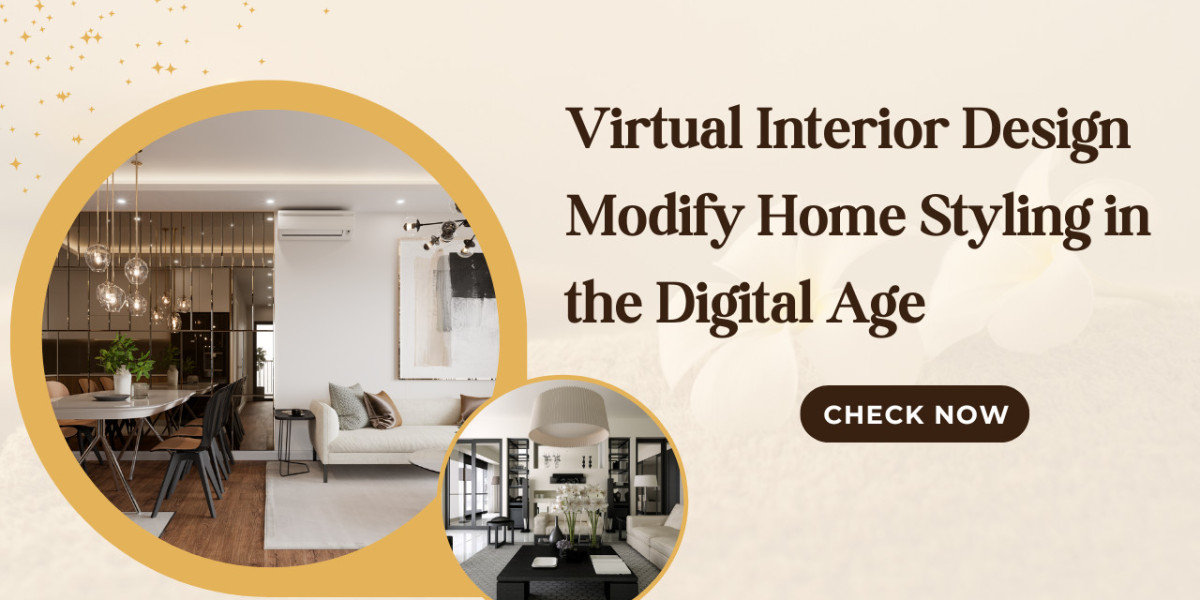Introduction
In the fast-paced world of home decoration and renovation, virtual interior design has emerged as a game-changer. Combining cutting-edge technology with the creativity of interior design, this innovative approach allows homeowners to visualize and plan their spaces in entirely new ways. Whether you’re redecorating a single room or undertaking a major renovation, virtual interior design offers a range of benefits that streamline the process and bring your vision to life with remarkable precision. In this blog, we will explore the concept of virtual interior design, its benefits, tools, and how it is transforming the home design industry.
What is Virtual Interior Design?
Definition and Concept
Virtual interior design refers to the use of digital tools and technologies to create, plan, and visualize interior spaces. Unlike traditional interior design, which often involves physical samples and in-person consultations, virtual interior design leverages software and online platforms to offer a comprehensive design experience. This approach allows designers and homeowners to experiment with various design elements and layouts in a virtual environment before making any physical changes.
How It Works
Virtual interior design typically involves several key steps:
Initial Consultation: Clients share their design preferences, needs, and goals with a designer through virtual meetings or questionnaires.
Design Planning: Designers use specialized software to create digital floor plans and 3D renderings of the space. These designs include furniture arrangements, color schemes, and decorative elements.
Visualization: Clients can view realistic 3D models and virtual tours of their space, allowing them to see how different design choices will look in real life.
Revisions and Finalization: Based on client feedback, designers make adjustments and refine the design. Once the final design is approved, clients receive detailed instructions and shopping lists to bring the vision to life.
Benefits of Virtual Interior Design
Convenience and Accessibility
One of the most significant advantages of virtual interior design is its convenience. Clients can collaborate with designers from the comfort of their homes, eliminating the need for travel and in-person meetings. This accessibility is particularly beneficial for those living in remote areas or with busy schedules. Virtual interior design platforms are available 24/7, allowing clients to review designs and make decisions at their own pace.
Cost-Effectiveness
Virtual interior design can be more cost-effective than traditional methods. By leveraging digital tools, designers can streamline the design process and reduce overhead costs associated with physical samples and in-person consultations. Clients benefit from lower design fees and can explore a wide range of options without incurring additional expenses. Additionally, virtual design helps prevent costly mistakes by allowing clients to see how different elements will look together before making purchases.
Enhanced Visualization and Flexibility
Virtual interior design offers unparalleled visualization capabilities. Clients can explore 3D renderings and virtual tours of their space, making it easier to understand how design choices will impact the overall look and feel. This enhanced visualization helps clients make informed decisions and reduces the risk of dissatisfaction with the final result. The flexibility of virtual design also allows for easy experimentation with different styles, color schemes, and layouts.
Access to a Wider Range of Resources
With virtual interior design, clients have access to a vast array of design resources and products from around the world. Designers can source furniture, decor, and materials from online catalogs and global suppliers, offering clients a broader selection than traditional design methods. This access to diverse resources ensures that clients can find unique and high-quality items that match their vision.
Tools and Technologies in Virtual Interior Design
Design Software
Several design software tools are at the heart of virtual interior design. These tools allow designers to create detailed floor plans, 3D renderings, and interactive models of interior spaces. Popular design software includes:
SketchUp: Known for its user-friendly interface and powerful 3D modeling capabilities, SketchUp is widely used by interior designers to create detailed and realistic visualizations.
AutoCAD: A professional-grade software used for creating precise floor plans and technical drawings, AutoCAD is essential for detailed design projects.
Revit: A Building Information Modeling (BIM) tool that provides comprehensive design and visualization capabilities, Revit is often used for complex projects and architectural design.
Virtual Reality (VR) and Augmented Reality (AR)
Virtual Reality (VR) and Augmented Reality (AR) technologies are transforming virtual interior design by offering immersive and interactive experiences. VR allows clients to virtually walk through their redesigned spaces, experiencing the design from different perspectives. AR, on the other hand, overlays digital elements onto the real world, enabling clients to visualize how furniture and decor will look in their actual space using mobile devices or AR glasses.
Online Design Platforms
Several online platforms offer virtual interior design & Interior Designers in NJ services, making it easy for clients to access design expertise and tools. These platforms often provide features such as:
Room Planners: Tools that allow users to create floor plans and experiment with furniture arrangements.
Style Quizzes: Assessments that help designers understand clients' preferences and style preferences.
Product Catalogs: Extensive collections of furniture, decor, and materials that clients can browse and select.
The Future of Virtual Interior Design
Integration with Artificial Intelligence (AI)
The integration of Artificial Intelligence (AI) into virtual interior design is set to revolutionize the industry. AI algorithms can analyze client preferences, suggest design options, and even predict trends based on data. AI-driven design tools will enable more personalized and efficient design experiences, allowing designers to create tailored solutions with greater accuracy.
Increased Interactivity and Customization
As technology continues to advance, virtual interior design will offer even greater interactivity and customization. Future developments may include more sophisticated VR and AR experiences, allowing clients to interact with and modify designs in real time. Customization options will become more extensive, enabling clients to create truly unique and personalized spaces.
Sustainability and Eco-Friendly Solutions
Virtual interior design will also play a role in promoting sustainability and eco-friendly practices. By visualizing and planning designs virtually, clients can make more informed decisions about materials and products, reducing waste and minimizing the environmental impact of their projects. Designers can also use virtual tools to explore sustainable design options and incorporate eco-friendly practices into their work.
Conclusion
Grayscale Homes Virtual interior design is transforming the way we approach home decoration and renovation. With its convenience, cost-effectiveness, and advanced visualization capabilities, it offers a modern solution to the challenges of traditional design methods. As technology continues to evolve, virtual interior design will become even more interactive and personalized, allowing clients to create beautiful and functional spaces with ease. Embracing virtual interior design means harnessing the power of technology to bring your design vision to life, making the process of creating your dream home more efficient and enjoyable than ever before.








